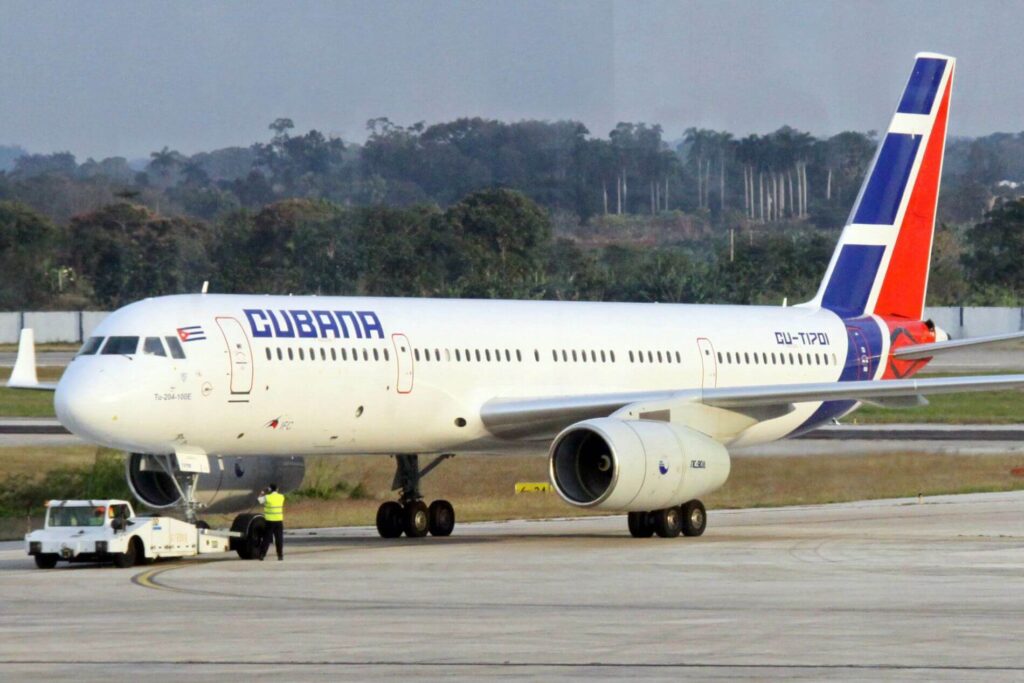When it comes to unconventional airlines, Cuba’s flag carrier Cubana de Aviación should not be overlooked. Looking back over its history, it is easy to see how the airline has amassed one of the most exotic fleets in the industry. Today, even though its variety has been greatly reduced, Cubana’s aircraft are some of the most unusual in the world.
The airline dates back to the 1920s. During the following decades, the airline’s fleet was closely aligned with Cuba’s political ideologies. In the 1940s and 50s, Cubana flew everything from Douglas DC-3s to Lockheed Constellations. In the 1960s and 70s, after the communist revolution, Soviet Antonov An-24s and Ilyushin Il-18s were added to the fleet.

Cubana was one of the last airlines worldwide to retire the Il-18 (Image: Christian Volpati / Wikipedia)
By the 1980s, all Western aircraft had been retired and Cuba’s flag carrier relied entirely on Soviet engineering. Now, this is where the airline began to define its unusual fleet.
The dissolution of the Soviet Union brought economic hardship to Cuba, but also, for the first time since the 1950s, it also presented the possibility of obtaining modern Western-made aircraft.
Starting in 1991, Cubana began to rent Douglas DC-10s, a significant step up from its previous long-range flagship, the Ilyushin Il-62. By the end of the decade, the DC-10s were supplemented by a couple of modern Airbus A320 narrow-body airliners.

While most A320s Cubana operated retained liveries of their lessors, some have been repainted (Image: John Davies / Wikipedia)
The number of Cubana’s A320s only grew from there. Almost a dozen of these aircraft was operated by Cubana by the end of the decade. The jewels in the airline’s crown were a wide-body A330 introduced in 2003, and a Boeing 767 introduced in 2006.
These aircraft were leased from various European and American companies, and they rarely flew with Cubana’s livery, showcasing the company’s integration into the global aviation market.
However, this practice did not last.
As the Cuban economy began to stabilize in the late 2000s, the airline began to purchase Russian aircraft, which included relatively new narrow-body Tupolev Tu-204s wide-body Ilyushin Il-96s, as well as a regional Yakovlev Yak-42. A fleet of rare Ukrainian Antonov An-158s were also purchased.
They completed the company’s fleet, which now covered a wide number of needs from long-range to short-range, with an emphasis on domestic and regional flights. The need to rent Western aircraft disappeared.
The only exception was a fleet of ATR 72s, small European turboprops that supplemented the An-158s. Two still fly with Cubana to this day, performing the occasional unscheduled domestic flight.
Cubana’s ATR 72s were originally purchased for Aero Caribbean, Cuba’s domestic airline. In 2015 it was merged with Cybana (Image: Jongleur100 / Wikipedia)
Additionally, the An-158s, the most common aircraft in the airline’s fleet, do not perform scheduled flights. The unusual little airplane was grounded world-wide following a widely reported crash in 2018. In the same year, Cuba’s aviation authority said that Cubana de Aviación’s fleet suffered from multiple technical problems, and Cuban would not fly its Antonov again.
However, some of Cubana’s Il-96s still fly and remain the only aircraft of this type in commercial operation. The aircraft connects Cuba with Spain and Paraguay and are remain the only way for civilian passengers to experience this aircraft.
Designed in the 1980s, the Il-96 remains the only wide-body aircraft produced in Russia, although besides Cubana, it is only operated by the Russian government (Image: Pedro Aragão / Wikipedia)

